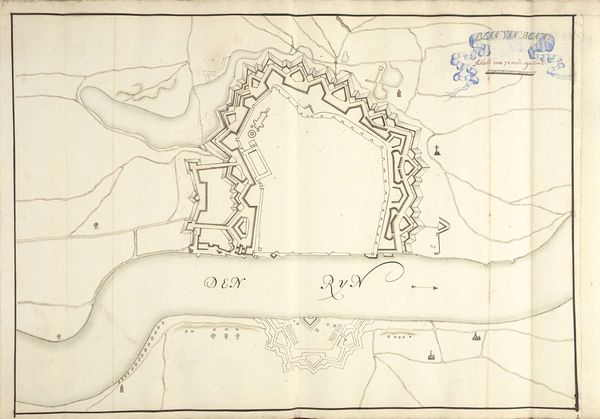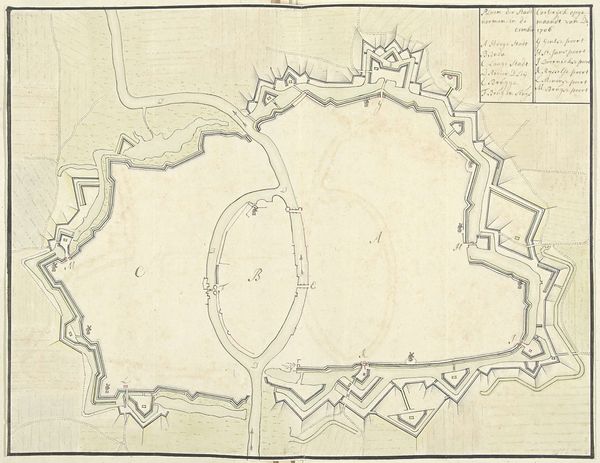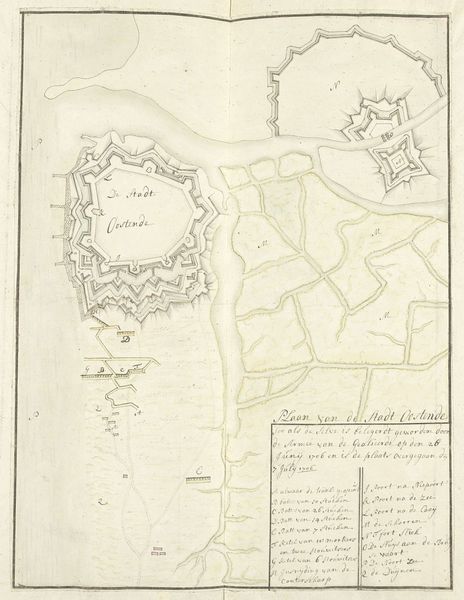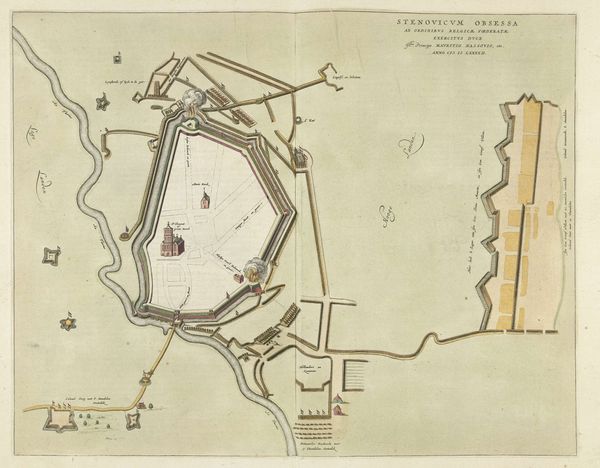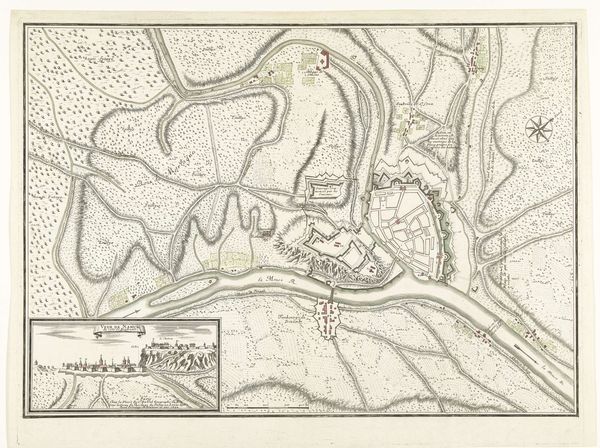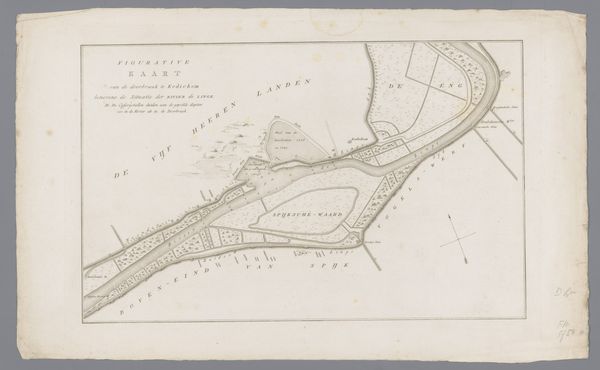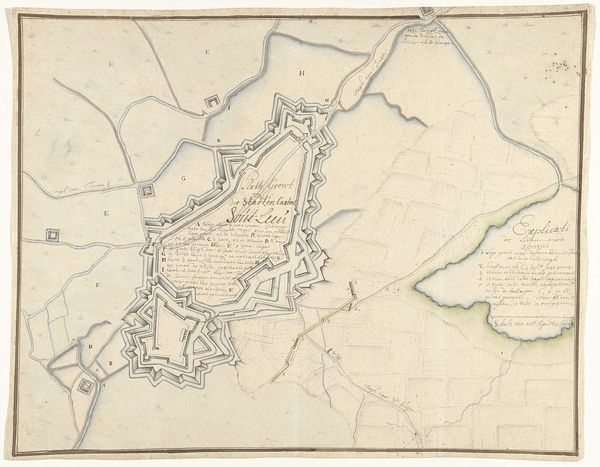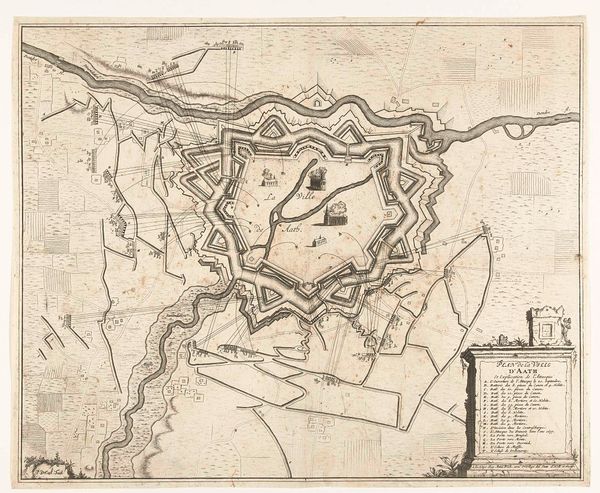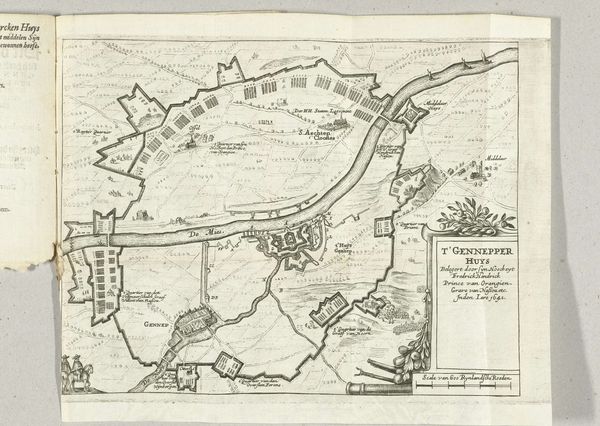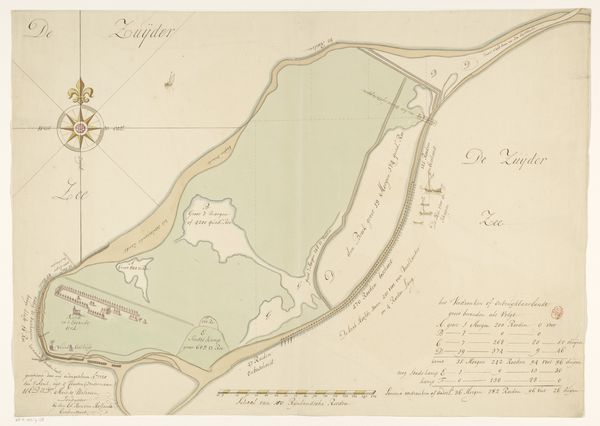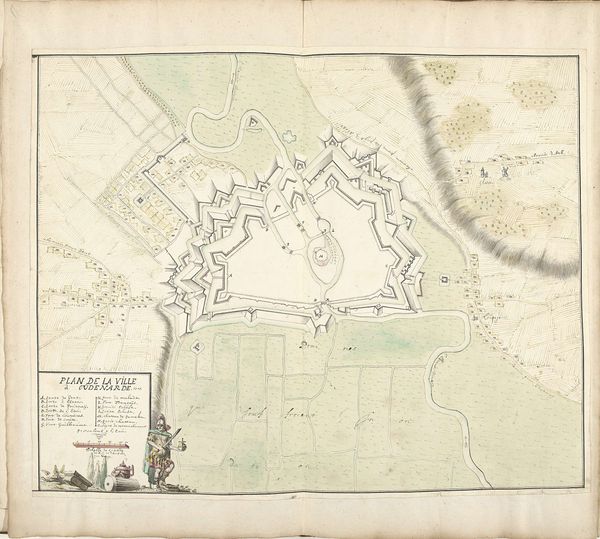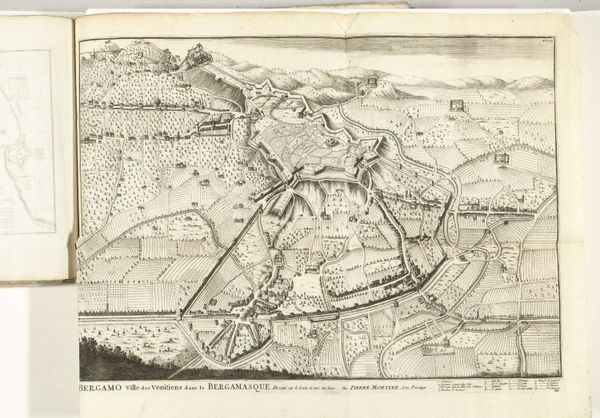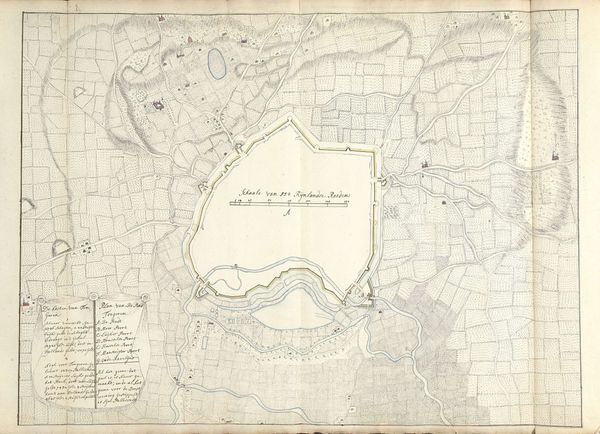
drawing, paper, watercolor, ink
#
drawing
#
baroque
#
paper
#
watercolor
#
ink
#
geometric
#
cityscape
Dimensions: height 325 mm, width 422 mm
Copyright: Rijks Museum: Open Domain
Curator: This work, titled "Plattegrond van Tongeren," provides us with a bird's eye view of the city as it was around 1705. Drawn by Samuel Du Ry de Champdoré using ink and watercolor on paper, it's a striking example of Baroque cartography. Editor: My first thought is how contained everything appears. The geometric shapes of the city's layout are emphasized by the neat lines of its architecture and infrastructure, like walls. It gives the impression of tight control and restricted movement, wouldn't you say? Curator: The geometrical shapes are key. Observe how the rigid lines defining the city walls contrast with the more organic shapes of the surrounding landscape. The sharp angles form almost an outer shell, and those turret details. You notice the almost stylized scale legend, like a decorative frieze, nestled within its geometric structure. The visual composition and detail emphasize the constructed and deliberate nature of the cityscape. Editor: Absolutely. And considering the period, a map isn't just about geographical accuracy; it’s also about power. By carefully delineating the city's boundaries and fortifications, Champdoré visualizes a political claim. Notice how this claim extends beyond mere documentation through that prominent ribbon at its center that labels the image. It serves to remind the viewer that this is an assertion of control. This visualization has obvious applications within military strategy. Curator: Indeed. We can also see the interplay between function and form. While primarily a practical tool, the delicate linework, the subtle washes of color... they elevate the map beyond mere utility. The delicate variations in color emphasize surface, while linear perspective establishes depth, underscoring a relationship between graphic precision and optical legibility. Editor: I’m especially intrigued by the waterways and bodies of water featured just beyond the edge of the architecture. The light use of color surrounding those features offers visual cues to natural features, and speaks volumes about the communities' negotiations between constructed space and surrounding natural features. Curator: Examining how geometric forms negotiate organic terrain is valuable indeed. In its fusion of art and science, we glimpse the mindset of an age striving to impose order on the world. Editor: It’s a fascinating testament to the relationship between art, power, and the visualization of space. What do you make of this relationship, finally? Curator: By meticulously outlining the structures and negative spaces through strategic linework, Du Ry De Champdoré masterfully achieves a cohesive two-dimensional composition that can now serve as a valuable primary source in archival memory and cartographic preservation.
Comments
No comments
Be the first to comment and join the conversation on the ultimate creative platform.
